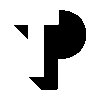

Kirloskar Oil Engines




20+ Kirloskar Oil Engines Interview Questions and Answers
Q1. What is entropy and real life example
Entropy is a measure of disorder or randomness in a system.
Entropy increases with time in a closed system
A messy room has higher entropy than a clean room
Melting of ice is an example of increase in entropy
Burning of wood is another example of increase in entropy

Q2. Used of flywheel, crankcase, AVM pre filter
Flywheel, crankcase, and AVM pre filter are components used in internal combustion engines.
Flywheel stores rotational energy and helps maintain engine speed during power strokes.
Crankcase houses the crankshaft and other engine components.
AVM pre filter is used to remove larger particles from the air before it enters the engine.
These components are essential for the proper functioning of internal combustion engines.

Q3. Various thermodynamic processes,
Thermodynamic processes are various ways in which energy can be transferred to or from a system.
Isothermal process: constant temperature
Adiabatic process: no heat transfer
Isobaric process: constant pressure
Isochoric process: constant volume
Examples: carnot cycle, rankine cycle, stirling cycle

Q4. What up milling Down milling Feedrate calculation Rpm calculation Tool preseter Etc.
Up milling and down milling are two types of milling operations used in machining. Feedrate and RPM calculations are important for optimizing cutting speeds.
Up milling involves the cutting tool rotating in the opposite direction of the workpiece feed, resulting in a smoother finish.
Down milling involves the cutting tool rotating in the same direction as the workpiece feed, but can lead to a rougher finish.
Feedrate calculation is important for determining the speed at which th...read more

Q5. What a idea target archives and level up
The idea target archives and level up involve setting specific goals for improvement and growth.
Set clear and achievable targets for improvement
Regularly assess progress towards goals
Implement strategies to level up skills or knowledge
Seek feedback and adjust approach as needed

Q6. What is Otto cycle
Otto cycle is a four-stroke combustion cycle used in spark-ignition engines.
It consists of four processes: intake, compression, power, and exhaust.
During the intake stroke, the fuel-air mixture is drawn into the cylinder.
In the compression stroke, the mixture is compressed to a high pressure and temperature.
The power stroke is where the spark plug ignites the mixture, causing it to expand and push the piston down.
Finally, in the exhaust stroke, the spent gases are expelled fr...read more

Q7. Factor of safety
Factor of safety is the ratio of the maximum stress a material can withstand to the actual stress it is subjected to.
It is used to ensure the safety and reliability of a design.
It is calculated by dividing the ultimate strength of a material by the maximum stress it is expected to experience.
A higher factor of safety indicates a more reliable design.
Factors of safety vary depending on the application and industry.
For example, a factor of safety of 2 is common in civil enginee...read more

Q8. what is fishbone diagram
Fishbone diagram is a visual tool used to identify the possible causes of a problem or an effect.
Also known as Ishikawa diagram or cause-and-effect diagram
Consists of a central spine and branches that represent different categories of potential causes
Used in quality control, process improvement, and problem-solving
Example: A fishbone diagram can be used to identify the possible causes of defects in a manufacturing process


Q9. Flywheel used in a engine
A flywheel is a mechanical device used in engines to store rotational energy and smooth out fluctuations in engine speed.
Flywheels are typically made of steel or aluminum and are attached to the engine's crankshaft.
They store energy during the power stroke and release it during the compression stroke to keep the engine running smoothly.
Flywheels are also used in hybrid vehicles to store energy from regenerative braking.
They can be found in a variety of engines, from small gas...read more

Q10. What is the work process?
The work process involves diagnosing, troubleshooting, repairing, and maintaining equipment or systems to ensure optimal performance.
Diagnosing issues by analyzing symptoms and using diagnostic tools
Troubleshooting problems to identify root causes
Repairing or replacing faulty components
Performing regular maintenance to prevent breakdowns
Testing equipment after repairs to ensure functionality

Q11. What a idea target archives
Target archives are specific goals or objectives that a service engineer aims to achieve.
Identifying key performance indicators (KPIs) to measure success
Setting realistic and achievable targets based on customer needs and company goals
Regularly reviewing and adjusting targets to ensure continuous improvement

Q12. What a management system
A management system is a set of policies, processes, and procedures used by an organization to ensure that it can fulfill the tasks required to achieve its objectives.
A management system helps to organize and streamline operations within an organization.
It includes elements such as planning, organizing, leading, and controlling.
Examples of management systems include ISO 9001 for quality management and ISO 14001 for environmental management.

Q13. Machine design (types of mechanisms)
Machine design involves various types of mechanisms for efficient functioning.
Mechanisms include gears, cams, linkages, belts, chains, and pulleys.
Gears are used for power transmission and speed reduction.
Cams are used for converting rotary motion to linear motion.
Linkages are used for transmitting motion and force between two points.
Belts, chains, and pulleys are used for power transmission.
Examples of machines that use these mechanisms include engines, conveyor belts, and p...read more

Q14. Brief flow chart of an generator
A generator converts mechanical energy into electrical energy.
Fuel is burned to create mechanical energy
Mechanical energy turns a rotor inside the generator
The rotor creates a magnetic field
The magnetic field induces an electrical current in the stator
The electrical current is sent to a transformer to increase voltage
The high voltage electricity is sent to the power grid or used locally

Q15. Electrical machines type
Electrical machines are devices that convert electrical energy into mechanical energy or vice versa.
Types include electric motors, generators, transformers, and alternators
Electric motors convert electrical energy into mechanical energy to perform work
Generators convert mechanical energy into electrical energy
Transformers transfer electrical energy between circuits
Alternators convert mechanical energy into alternating current electrical energy

Q16. what is six sigma
Six Sigma is a data-driven methodology used to improve business processes by reducing defects and variability.
Six Sigma aims to achieve a level of quality where the probability of defects is extremely low.
It uses statistical analysis to identify and eliminate sources of variation in a process.
The methodology follows a structured approach called DMAIC (Define, Measure, Analyze, Improve, Control).
Six Sigma is widely used in industries such as manufacturing, healthcare, and fina...read more

Q17. Why use probe? , what is msds, hira?

Q18. Power system working
Power system working involves generation, transmission, distribution, and utilization of electrical energy.
Power generation from sources like coal, hydro, nuclear, solar, wind, etc.
Transmission of power through high voltage lines to substations.
Distribution of power to homes and businesses through transformers and distribution lines.
Utilization of power by various electrical devices and appliances.
Monitoring and control of the power system to ensure reliability and efficiency...read more

Q19. What is the generator
A generator is a device that converts mechanical energy into electrical energy.
Generators are commonly used in power plants to generate electricity for homes and businesses.
They can also be used as backup power sources during power outages.
Generators come in various sizes and types, such as portable generators for camping or large industrial generators for factories.

Q20. Scale and work description with location
As a Product Manager, I am responsible for scaling products and defining work descriptions, typically located in the company's headquarters or main office.
Define product roadmap and strategy for scaling
Collaborate with cross-functional teams to execute product initiatives
Create detailed work descriptions for development teams
Ensure alignment with company goals and objectives
Location may vary depending on company headquarters or main office

Q21. What is work offset?





Top HR Questions asked in Kirloskar Oil Engines
Interview Process at Kirloskar Oil Engines

Top Interview Questions from Similar Companies









Reviews
Interviews
Salaries
Users/Month












